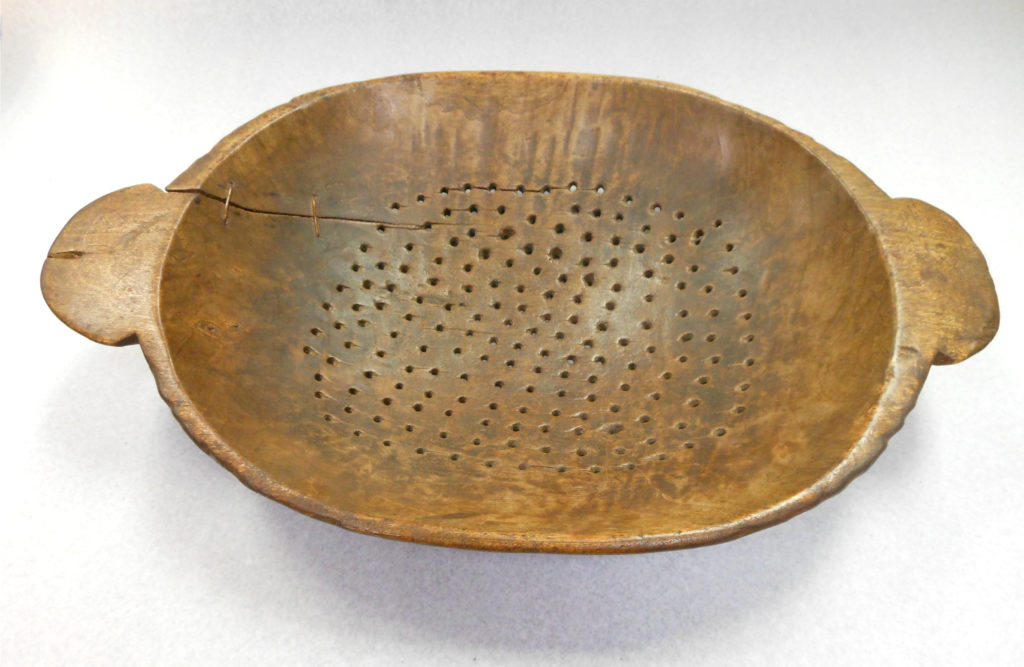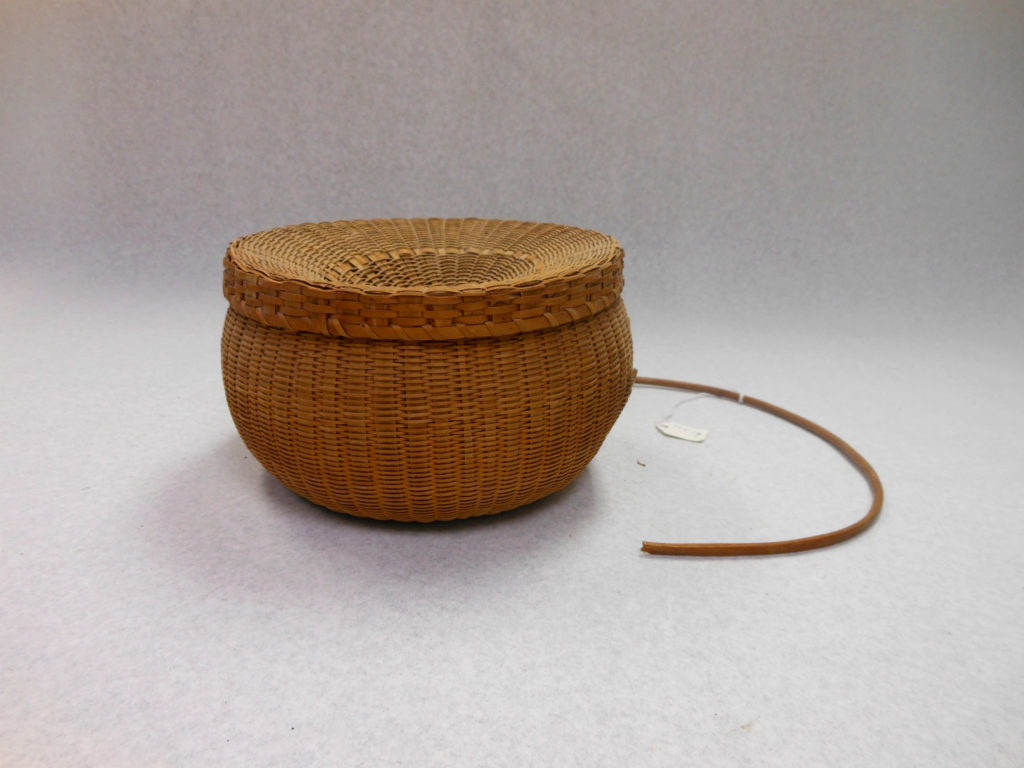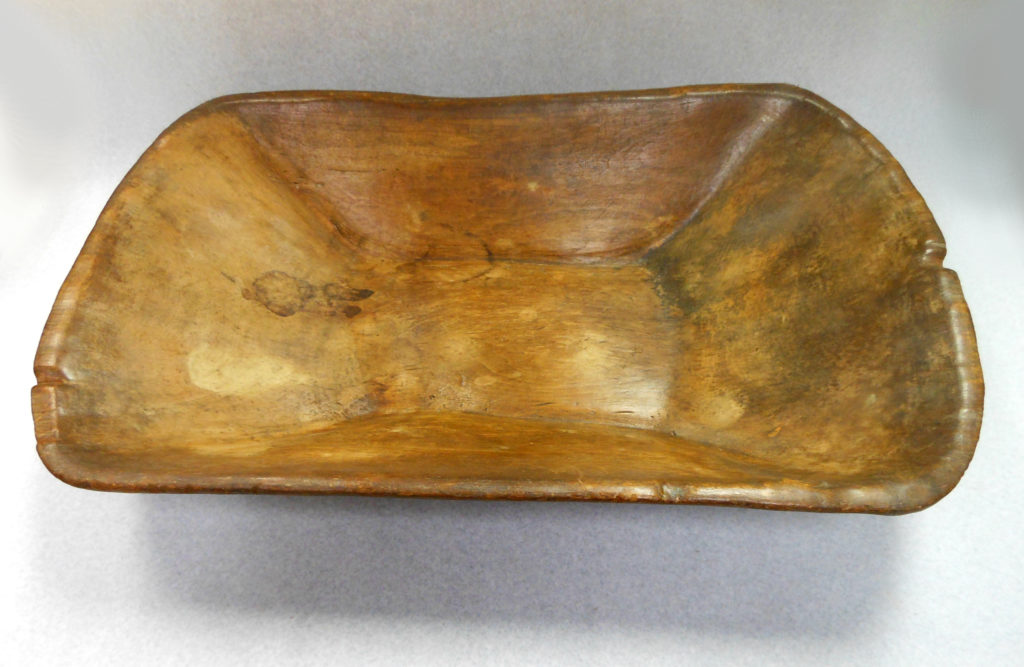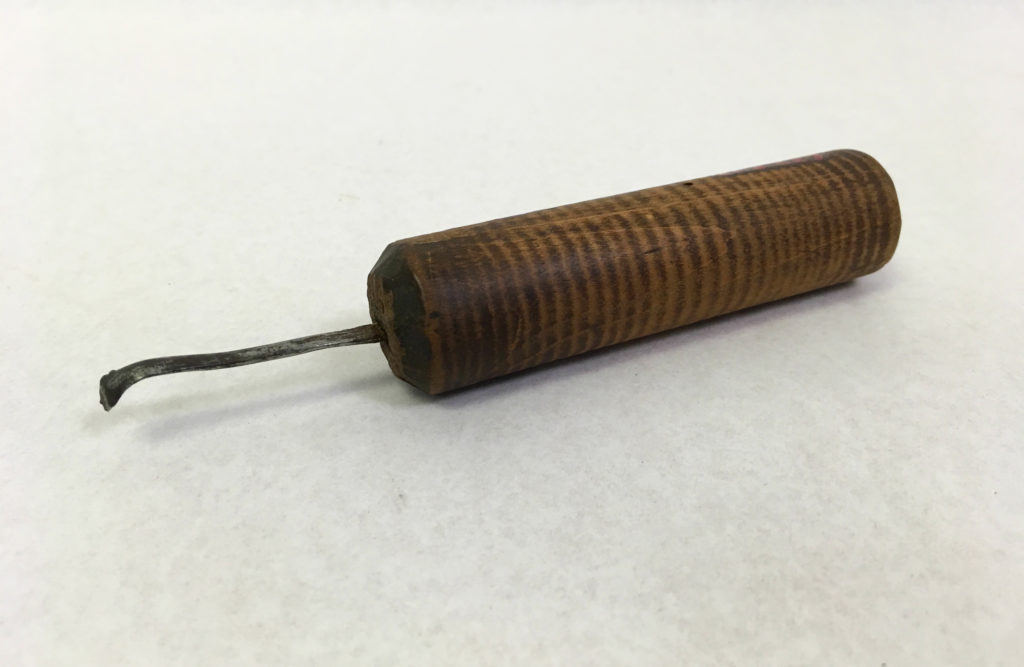Laura Webb, Program Specialist
Hello again, folks! We’re now halfway through our NEH grant timeline. I’m approaching the home stretch of object editing, and will soon begin photographing select items. In the meantime, let’s chat about artifact conservation!
In going through object entries in PastPerfect, I have also been checking our maintenance and conservation notes entered into the system from past conservator reports. Early on in this project, one word in these notes caught my eye: “saliva.” At first, I thought this must be some sort of typo. Then, after finding several more examples, I wondered if it was a faithful documentation of a (surely!) outdated practice. After all, artifact conservation techniques have certainly changed a lot over history. Out of insatiable curiosity, I dug a little deeper.

I found out that cleaning artifacts with human saliva—known colloquially as a “spit shine,” and scientifically (albeit euphemistically) as “enzymatic cleaning”[1]—is a conservation technique that has been used for centuries.[2] However, it also (surprisingly enough) has scientific backing! A 1990 Portuguese study confirmed that the amylase enzyme contained in human saliva makes it, for many delicate surfaces, a more effective cleaning agent than water, while still being gentle enough to use on sensitive materials.[3] The authors won the 2018 chemistry “Ig Nobel” prize for unusual achievements in scientific research for their study.[4] It has also been investigated for use on silver gelatin photographic prints—although with mixed results, and further study needed.[5]


As y’all might imagine, the Covid-19 pandemic has caused this practice to be put on hold in some institutions, while others are putting it under closer scrutiny and modifying their procedures to increase sanitation.[6] Synthetic solutions that imitate saliva have also been tested, and appear to be just as effective, but of course are more expensive than…well, than fluids humans naturally produce anyway.
Regardless of what future studies determine, we can understand how important it is to document all past conservation treatments on an artifact! Have you ever seen old glue turn yellow on something? Yep, that’s not what we want. Our standards, knowledge, and available materials change over time, and sometimes it is necessary to undo past work for the longevity of an object.

While past conservators at Pleasant Hill have used this technique, I could not find a record of it being used since the mid-1990s, and none of these items are currently on display—so you don’t need to worry about our current exhibits! In general, though, perhaps…don’t lick the artifacts.
Shaker Village of Pleasant Hill was awarded a CARES grant through The National Endowment for the Humanities in June 2020. Funding from this grant award supported two activities to enhance digital humanities initiatives at SVPH, including Laura Webb’s work to review our collection records and prepare them for publishing in a public digital database.
[1] Allison Rosenthal, “Spit Cleaning: Conservation’s Dirty Little Secret” (Buffalo Bill Center of the West, July 9, 2015), accessed September 18, 2020, https://centerofthewest.org/2015/07/06/spit-cleaning-conservations-dirty-little-secret/.
[2] Steven Litt, “Little-Known Art-Cleaning Technique Nothing to Spit At,” The Seattle Times (The Seattle Times Company, April 7, 2002), accessed September 18, 2020, https://archive.seattletimes.com/archive/?date=20020407.
[3] Paula M. S. Romão, Adília M. Alarcão, and César A. N. Viana, “Human Saliva as a Cleaning Agent for Dirty Surfaces,” Studies in Conservation 35, no. 3 (August 1990): pp. 153-155, accessed September 18, 2020, https://doi.org/10.2307/1506167.
[4] Emma Stoye, “Art Conservation Using Saliva Wins Chemistry Ig Nobel,” Chemistry World, September 14, 2018, accessed September 18, 2020, https://www.chemistryworld.com/news/art-conservation-using-saliva-wins-chemistry-ig-nobel/3009504.article.
[5] Ruth Oliver, “May I Spit on Your Photograph? A Preliminary Investigation into the Effectiveness of Saliva and a Synthetic Alternative for Surface Cleaning Silver Gelatin Photographs,” in 4th Book, Paper & Photographs Symposium, 2006, pp. 174-193.
[6] Luke Wong, “Coronavirus Puts Damper on Saliva Cleaning Method in Art Galleries and Museums,” ABC News (ABC Central West, June 27, 2020), accessed September 18, 2020, https://www.abc.net.au/news/2020-06-28/saliva-spit-cleaning-art-gallery-museum-conservator-pandemic/12398824.